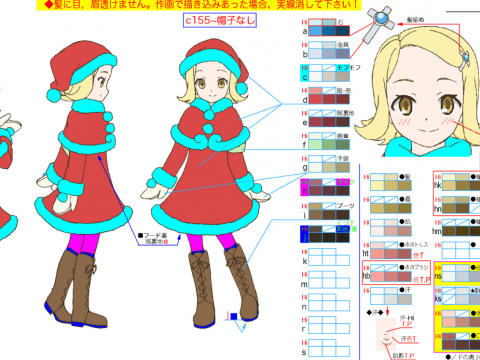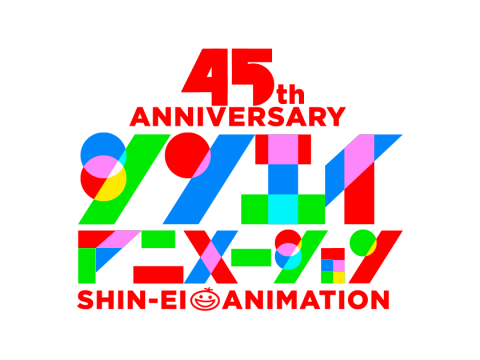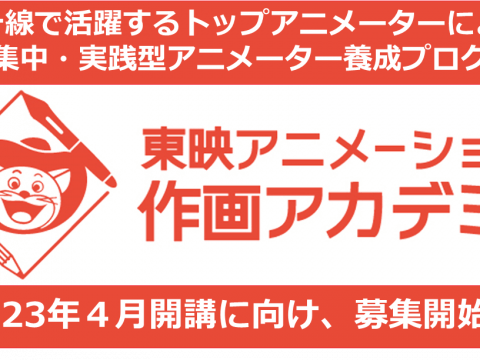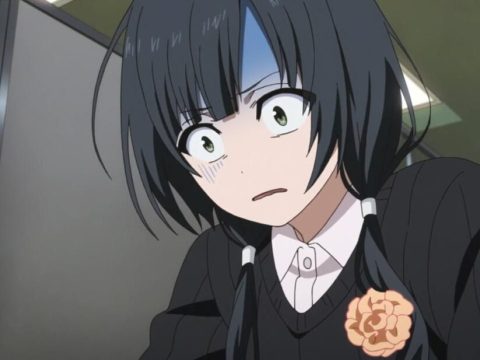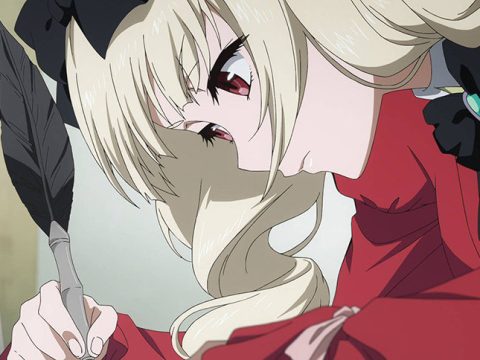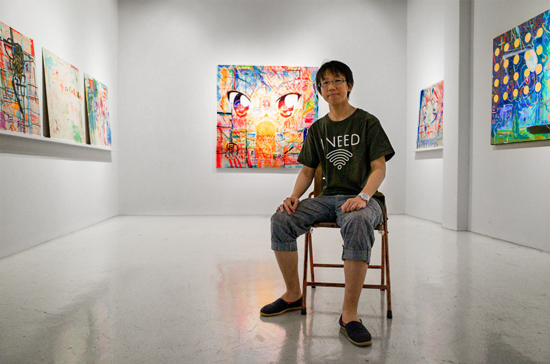
The worlds of manga and modern art have long been connected, with artists like Takashi Murakami combining the two to international acclaim. More recently, the launch of Japanese art sites like Pixiv has spawned a new movement of internet-based artists working in an anime-influenced style.
One of the most prominent (and controversial) artists to emerge out of this movement is Lie Fujishiro. Fujishiro, one of the founding members of modern art collective Chaos*Lounge, uses his fascination with concepts from otaku culture like moe, 2D, and obsession with characters as the basis for his works, which most often take the form of large, overwhelming collage-like pieces.
On the occasion of Fujishiro’s latest solo exhibition, Charactronica, we were able to sit down with both him and the exhibition’s curator, Noriyuki Tsuji.
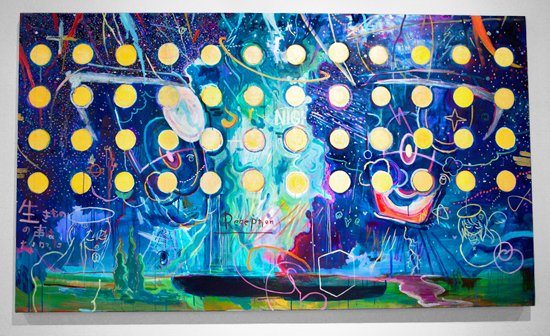
Origins
“I was very sick for about a year as a child,” says Fujishiro. As he lay in bed, unable to move or make friends, his outlet for expression was his artwork.
As a young Japanese person, Fujishiro, like his peers, read manga in magazines like Shonen Jump, but he also attended an art-centric prep school, which introduced him to modern art.
“When my friends at art school drew for fun, they used a manga style, but when they did ‘serious’ art, it was in a traditional western style. I became interested in bridging in that gap,” Fujishiro explains.
Why “Lie”? Tsuji says that in Japan, art is less concerned with reproducing reality than in the west. “[Fujishiro] is using the name “Lie” as a kind of statement: my work is fiction.”
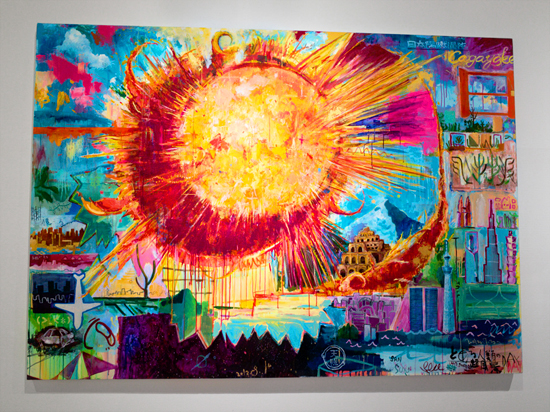
Charactronica
Fujishiro’s current exhibition, Charactronica, is, unsurprisingly enough, all about the meaning of “character.” Fujishiro was very interested in the question of what makes a character a character. The title is a play on “electronica” – if an electron is a basic building block of the world, the most basic piece of a character must be a characatron – hence Charactronica.
It’s also about giving traditionally two-dimensional characters a physical presence in the world via art. Perhaps that’s why, though he’s best known as an internet artist, it was also important for Fujishiro to have a real-life exhibition.
“It’s important to see the scale and textures directly with your own eyes,” he says.
Two of the pieces in the exhibition, “Day” and “Night,” were inspired by Fujishiro’s question after 2011’s deadly East Japan Earthquake: what exactly is Japan? “Day” deals with Japan’s special relationship with the sun, and both its good and bad effects. The sun in the painting also stands as a metaphor for energy, highlighting the energy dilemma after the collapse of the Fukushima nuclear plant.
“Night” is an attempt to find signs of life in the silent, lifeless nights of post-tsunami Tohoku.
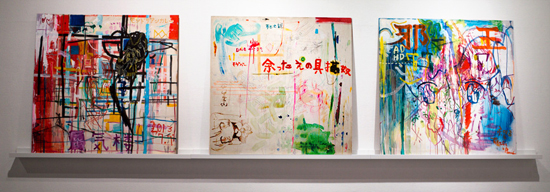
Chaos*Lounge
Pixiv has a rating system, and the top ranks are often filled with with very commercial-looking works, explains Fujishiro. But there are many interesting artists on Pixiv who don’t necessarily make the top rankings. He founded Chaos*Lounge as a way for these like-minded artists to gather and collaborate, both on and offline.
Chaos*Lounge soon became controversial for several of its projects, which involved using other Pixiv users’ works in collages and installations.
The lack of a quick response by Pixiv, as well as the appearance of a relationship between Pixiv and Chaos*Lounge (denied by Pixiv), caused many of its users to migrate to other art sites.
When asked about the controversy, says Tsuji, “not everything you read on the internet is accurate.” Fujishiro and Tsuji declined to comment further, preferring to concentrate on Fujishiro’s solo projects. Though Fujishiro remains a member of Chaos*Lounge, he seems interested in distancing himself from the group.
“Chaos*Lounge has entered a kind of ‘season two’,” says Tsuji.
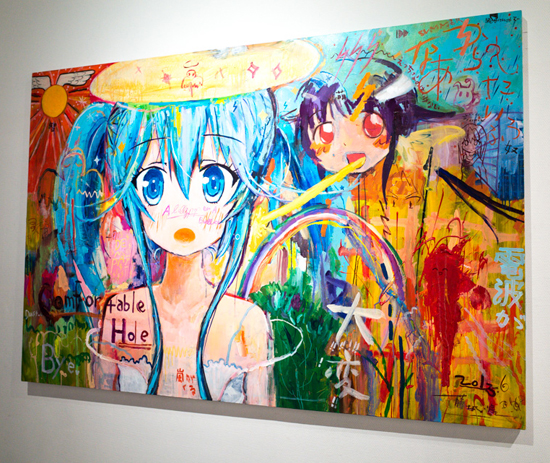
Anime
Early on, Fujishiro made the decision to work in art, rather than manga or anime, because “with manga or anime, there’s always a client, but with art you can express your own feelings more freely.”
But he remains a fan of both manga and anime, especially works like Milky Holmes, where the characters bend and twist unrealistically. When asked what he’s watching these days, he admits that rather than entire series, he’s very interested in anime opening titles, where a lot of visual information is packed into a short amount of space.
Looking at his art, that makes a lot of sense.
Charactronica ran in Tokyo in July and August of this month. Many of the works featured in the exhibition, plus more information about the artist can be found here: https://gjks.org/charactronica/
This story originally ran in the 9/3/13 issue of the Otaku USA e-News
e-mail newsletter. If you’re not on the mailing list, then you’re reading it late!
Click here to join.


